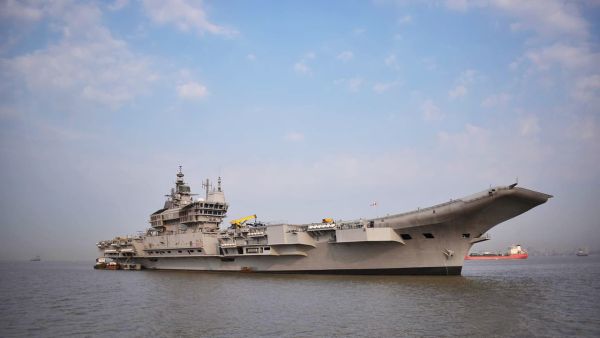

At Ran Samvad in Mhow, top military leaders revealed how Operation Sindoor showcased India’s naval strength, air power, and drone warfare readiness, stressing self-reliance, indigenous weapons, and strong media partnership for future conflicts.
Mhow: During Operation Sindoor, the Indian Navy adopted a ‘forward posture’ in the Arabian Sea by deploying fully armed warships, submarines and 15 MiG-29K fighter jets aboard aircraft carrier INS Vikrant, Vice Admiral Tarun Sobti said on Tuesday.
Speaking on the sidelines of the first-ever Ran Samvad event at Mhow in Madhya Pradesh, Vice Admiral Sobti said that when Pahalgam attack took place, “We realised that the military action could take place so we brought ships at harbour which were deployed in the sea within 96 hours.”
Stating that the ships and submarines are not fully loaded for different reasons every time due to technical reason principally and a large number of platforms were on the Western Seaboard.
Talking to Asianet Newsable English, Vice Admiral Sobti said:
“We topped up, we loaded all ships, we loaded our submarines and we sailed out, we embarked 15 Mig-29s on our new aircraft carrier Vikrant and we were ready at sea, the aim was to have a forward posture, a deterrent posture, so that the Navy of the other side does not threaten us in any way, does not threaten our trade lines, our economic lifelines or our coastline in any way....”
And the strategy worked as “I think we were extremely successful in this because we were able to push back the Pakistani Navy right bottled up into the coast, they had no freedom of manoeuvre, they did not dare to step out, they remained close to the coast and we maintain that posture and that I should say was the preparation and the action of the Indian Navy, so we were fully ready.”
Speaking about the lessons learnt from Operation Sindoor, the naval officer stated that many lessons have been learnt from Operation Sindoor, not just by the Navy, but the armed forces, and from these lessons, the actions, some have been implemented, some of them are rapidly under implementation.
Self-reliance in defence
Indian Air Force’s South Western Air Command Air Officer Commanding-in-Chief Air Marshal Nagesh Kapoor emphasised self-reliance as a defining takeaway as his command played a crucial role during the Operation Sindoor.
Air Marshal Kapoor said:
“The big lesson is indigenisation. We cannot afford supply-chain vulnerabilities. This time we demonstrated the use of indigenous weapons – and in the future, we must innovate and build at home to avoid such issues.”
Central Army Commander Lt Gen Anindiya Sengupta highlighted about the emerging threat from drones.
“During Operation Sindoor, we faced a large number of hostile drones. We must strengthen counter-drone measures while simultaneously developing our own aerial and autonomous capabilities to target enemy networks. Ran Samvad is a vital platform for such discussions,” he said.
On the information domain, Lt Gen Vipul Shinghal, Deputy Chief of Integrated Defence Staff (Doctrine, Organisation & Training) said:
“The armed forces can create the story, but it must be told from the right perspective. That is where media partnership is crucial. By inviting the media in large numbers to Ran Samvad, we are taking a correct step in that direction.”
-
Heavy rain forecast in Gujarat, fishermen advised not to venture into sea till August 28

-
Guiding Light: Incarnation Of Love

-
Post Mamkootathil, LoP Satheesan warns both CPI(M), BJP of shocking revelation

-
Post Mamkootathil, LoP Satheesan warns both CPI(M), BJP of shocking revelation

-
Palghar News: Fatal Tyre Burst At Boisar Plant Sparks Anger Over Worker Safety
